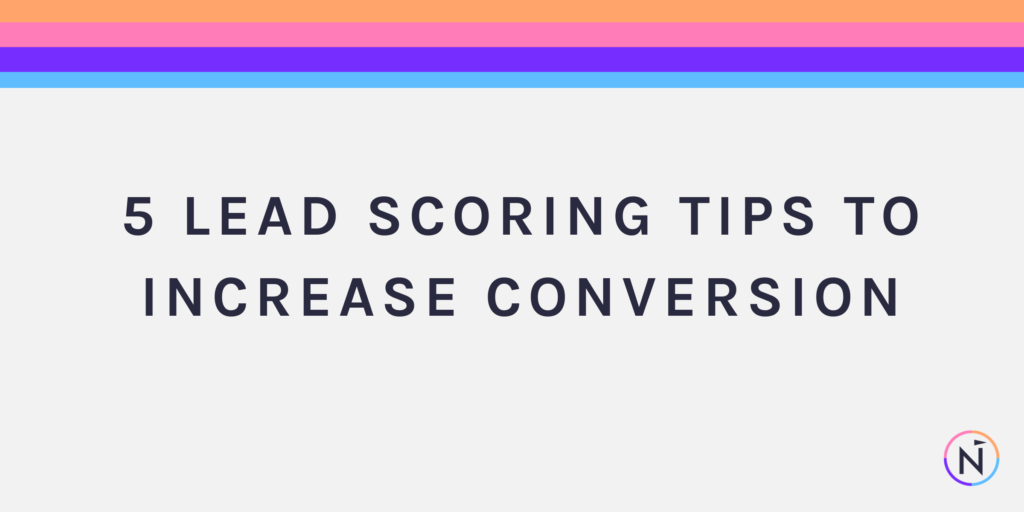Last week, we shared our brand new How To: Lead Scoring Resource, and ever since then, we haven’t been able to stop thinking about lead scoring!
Sounds a bit trite, but as a marketing automation company, we take lead scoring seriously—maybe a bit too seriously (jk, lead scoring is serious business and must be handled accordingly).
As we assembled this information “how-to” guide, we started thinking about tips and tricks we could share with you, our lovely audience, to help boost your conversion rate via lead scoring. One week later, we’re excited to share a handy-dandy list we’ve constructed to help you reap the rewards of lead scoring. Ready? Let’s hop to it!
Reminder: There’s no time like the present to freshen up on the fundamentals of lead scoring. Download our free How To: Lead Scoring resource here.

1. Establish clear SQL standards
First things first, be sure to same-page with your sales team when it comes to qualified leads. There’s no question that your sales qualified leads (SQLs) and marketing qualified leads (MQLs) will look different—that’s often the case and should be no cause for alarm.
However, the trouble starts when sales and marketing refrain from sharing their (potentially) differing standards.
When it comes to quality lead scoring, it’s important to base your lead score on SQLs. Why? Unfortunately, MQLs can often be considered “poor quality” because marketers don’t typically vet them before passing them off to a sales rep. As a marketer, I can express that this is no fault of marketers—vetting is simply not their job!
In order to increase your likelihood of conversion, establish clear SQL standards with your sales team and base your lead scoring approach off those standards.
Without alignment between marketing and sales, your lead score will be meaningless.
2. Study your top-converting site pages
Most lead scoring strategies take into account website visits, pages viewed, time on page, etc. when assigning a score. In general, your lead’s engagement with your website is key to understanding how to properly score them.
In order to drive conversion, take a look at your top-converting website pages and implement change accordingly. Find out what’s converting and why. Chances are, the pages with the most conversions are a clear indicator of what your leads are looking for.
Once you know what your leads want, you’re able to adjust and redesign other site pages to enhance conversion and perfect your lead scoring strategy.
3. Don’t ignore the big picture
Lead scoring is about so much more than conversions and sales. Ultimately, it’s about finding customers who are a good fit for you and whether you’re a good fit for them.
Let me explain: You could have a phenomenal lead scoring approach, but maybe one of your hottest leads simply had a change of heart or their circumstances changed.
If they were the right lead for you (according to your lead scoring approach), they’ll keep you in mind, they’ll talk about your product/company with their friends, and they’ll most likely remember you once they’re back in the buying game.
Lead scoring is about conversion, of course, but that’s not all it is. It’s about building a solid customer base with people who need, understand, and support your product/vision/business.
Don’t get too absorbed in the need to “sell, sell, sell!” Trust the process and invest in solid lead scoring strategy.
4. Persona development is worth your time and energy
If you’re reading this, you’re probably not new to the game. You also probably know that lead conversion rates are tough for all industries…that is to say, most leads don’t buy.
I know, I know—it was tough for me to type, let alone read.
Check out the average lead conversion rate for your industry here. I’ll be here to pick your jaw up off the floor.
With that being said, it’s vital for marketing teams to develop buyer personas and implement them into the grand marketing strategy. Find out who your ideal customers are—what are they looking for? What’s the buying process like for them? What sort of content do they enjoy? The list goes on and on. If you’re in need of assistance, check out this step-by-step guide to creating buyer personas!
Leading scoring is only as effective as the leads you’re going after, so make sure they’re worth your time and effort by establishing clear buyer personas ASAP.
5. Research and experimentation
Lead scoring isn’t a one-size-fits-all thing—it varies from industry to industry. What works for us (a SaaS company) won’t work for others and that’s a-okay!
While the fundamentals in our How To: Lead Scoring resource are universal, the factors and conditions used to assign a score to a lead will vary from business to business. If you’re struggling to decide the best lead scoring approach to take, don’t panic! It can take some time to work out the “perfect” lead scoring strategy—don’t forget we’ve all been there and even the best companies have to (and should!) readjust along the way.
Try things, see what works, and be sure to document the process. You’re doing great.
Forget visions of sugar plums, we’ve got visions of lead scoring dancing through our heads here at Net-Results (too soon for a Christmas reference?).
If you and your marketing team are looking to increase conversions via lead scoring, be sure to check out our How To: Lead Scoring resource to get back to basics and build a solid foundation.
Happy lead scoring, Net-Results peeps!
Lexie Robbins
Digital Marketing Specialist

